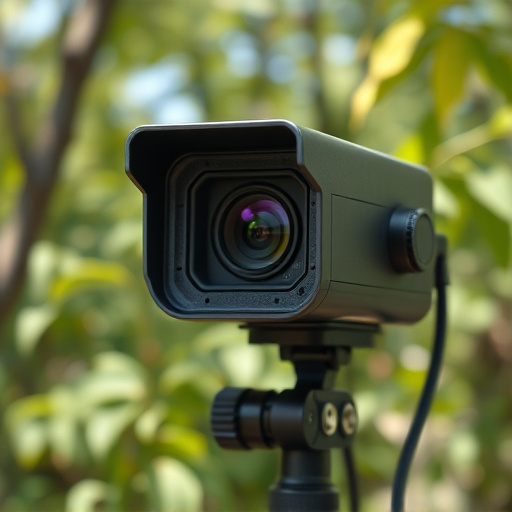Mini spy cameras have revolutionized nighttime recording with their compact size, infrared lights, and motion sensors, enabling discreet surveillance and capturing detailed footage without detection. Strategically placed lighting obstructs lines of sight, enhancing concealment for minimal intrusiveness in homes, offices, and public spaces. Advanced methods like specialized lighting equipment and thermal imaging technology are required to identify mini spy cameras operating in low-light conditions, ensuring comprehensive testing and uncovering concealed devices.
Uncover the art of hidden surveillance with our comprehensive guide to identifying mini spy cameras and their nocturnal operations. In today’s world, these tiny yet powerful devices are becoming increasingly sophisticated, raising concerns about privacy. This article delves into the techniques used by these miniature spies during nighttime recordings. We explore how lights can be employed to disguise camera presence and present effective testing methods to help you spot these hidden observers, ensuring your peace of mind in the dark.
- Understanding Mini Spy Cameras and Nighttime Recording Techniques
- The Role of Lights in Disguising Camera Presence
- Effective Testing Methods for Identifying Hidden Cameras
Understanding Mini Spy Cameras and Nighttime Recording Techniques
Mini spy cameras, also known as hidden cameras, are small, discreet devices designed to capture video or still images without the subject’s knowledge. These compact cameras have revolutionized surveillance and security by enabling users to record in places where traditional cameras might be impractical or illegal. Their miniature size allows them to be easily concealed, making them ideal for nighttime recording.
Nighttime recording techniques play a crucial role in leveraging mini spy cameras’ capabilities. Many of these devices feature infrared (IR) lights, which enable clear visibility and high-quality footage in low-light conditions. IR technology ensures that the camera can capture detailed images even in complete darkness, making it an effective tool for surveillance during night hours. Additionally, advanced models may incorporate motion sensors, triggering recordings only when movement is detected, further enhancing privacy and battery life.
The Role of Lights in Disguising Camera Presence
Lights play a pivotal role in disguising the presence of mini spy cameras, especially during nighttime recording. By strategically integrating lighting elements into surveillance setups, individuals can create an illusion of normalcy while capturing discreet footage. Well-placed lights can obscure the line of sight towards hidden cameras, making it more challenging for subjects to detect their observation. This technique is particularly effective in environments like homes, offices, or public spaces where minimizing intrusiveness is essential.
The use of strategic lighting also aids in preserving the quality of recorded videos. Nighttime recordings often require artificial illumination, and careful light positioning can ensure even coverage, reducing shadows that might reveal camera locations. This balance between concealment and image clarity makes mini spy cameras more versatile, suitable for various applications where discretion and video surveillance are necessary, such as security, surveillance, or investigative purposes.
Effective Testing Methods for Identifying Hidden Cameras
Identifying hidden cameras, especially miniature spy cameras designed for nighttime recording, requires meticulous and advanced testing methods. One effective approach is to utilize specialized lighting equipment that can detect infrared or UV emissions often associated with these concealed devices. By simulating various lighting conditions during testing, professionals can analyze anomalies in light reflection or absorption, which might indicate the presence of a hidden camera. This method is particularly useful for detecting mini spy cameras that are meticulously designed to blend into their surroundings.
Additionally, thermal imaging technology plays a pivotal role in effective testing. Thermal cameras capture heat signatures, making it possible to identify electronic devices emitting distinct temperature patterns. During nighttime recordings, this technology can pinpoint the location of hidden cameras by revealing unusual heat sources. Combining these techniques ensures comprehensive testing, enabling thorough identification of miniature spy cameras attempting to operate undetected.
In conclusion, understanding the intricacies of mini spy cameras and nighttime recording techniques is paramount in identifying their hidden presence. The subtle art of disguising camera identification using lights plays a pivotal role in this process. By employing effective testing methods, we can ensure that no covert recording device goes unnoticed. Staying vigilant and armed with the right knowledge, we can protect our privacy in an era where mini spy cameras and nighttime recordings pose significant risks.
